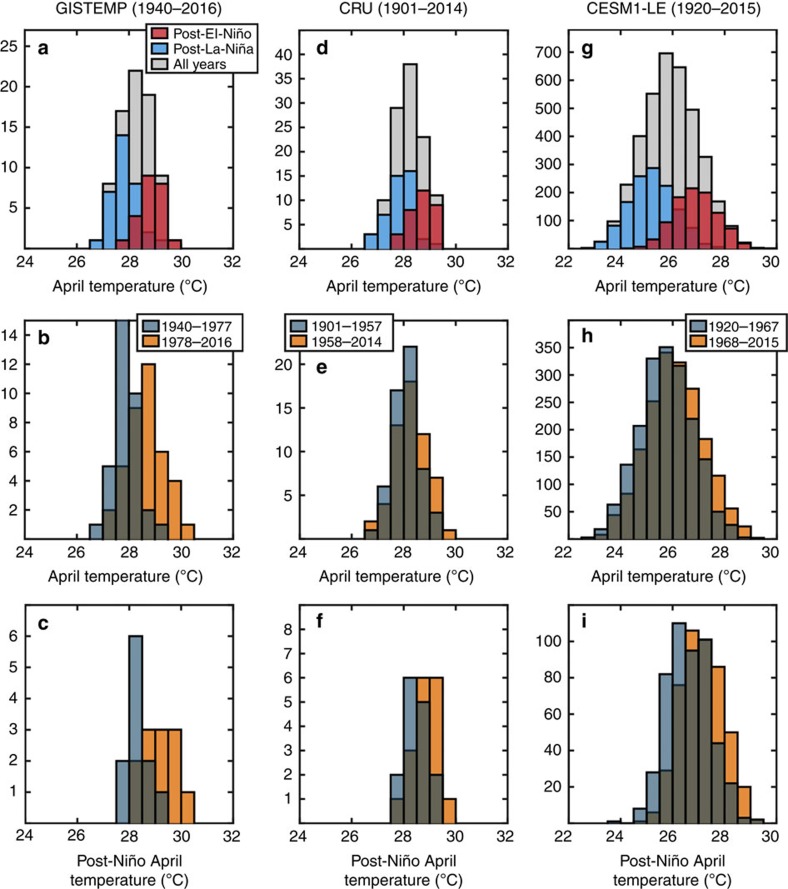Figure 3. Histograms of April SATs.
SATs for Mainland Southeast Asia (MSA) are taken from the GISTEMP (1940–2016; a–c) and CRU (1901–2014; d–f) observational data sets along with simulations from the CESM1-LE (1920–2015; g–i). Histograms in the top panel (a,d,g) delineate all the April data (grey) into those occurring after El Niño (red) and La Niña (blue) events over the entire time period. Histograms in the middle panel (b,e,h) separate the available April surface temperature data into two equal time periods (dark blue—earlier; orange—latter) over the length of the individual data sets. The bottom panel histograms isolate post-Niño-April events in the observations (c,f) and simulations (i) over the time period indicated in the middle panel, i.e., they separate the post-Niño events (red) in the topmost panel into the subperiods indicated by the middle panel for each of the data sets. All data sets were linearly detrended prior to analyses where the top panel histograms (a,d,g) were detrended over the entire time period for each data set, whereas linear detrending was performed for each subdivided time period in the subsequent analysis. We found that over their respective time periods for both GISTEMP (1940–1977; 1978–2016) and CRU (1901–1958; 1959–2014) data sets, the mean was significantly larger in the more recent subperiod (t-test: H=Ha; P<0.01) whereas the variance was not significantly different between the subperiods (f-test: H=Ho; P>0.05).

